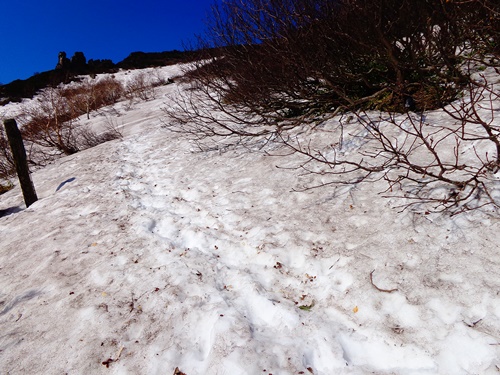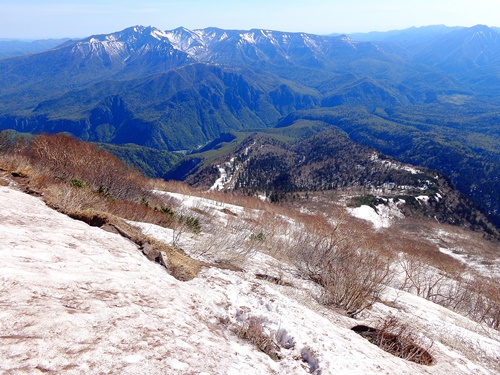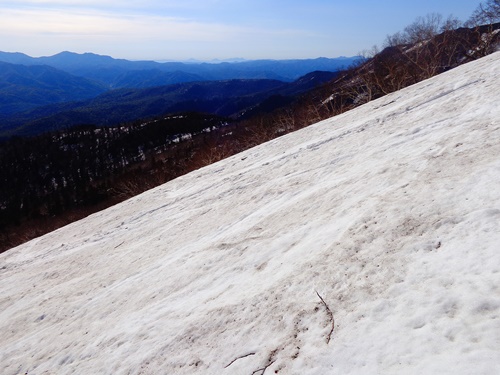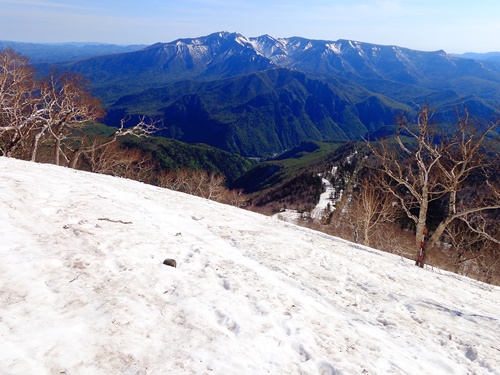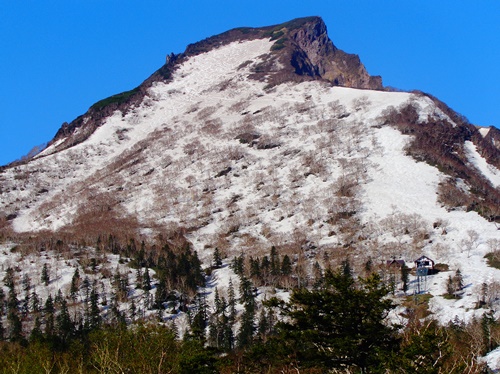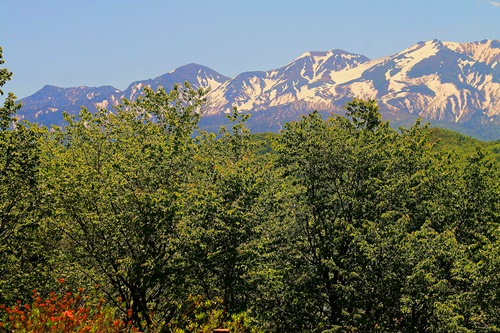The snow depth pole and part of a bench were exposed.
Last year only a portion of the pole was exposed, so based on this alone it is apparent that melting is progressing.
However, the trail from here becomes tricky.
Because the trail is still hidden, it becomes necessary to walk on the snow. There are many areas where the danger of punching through the snow exists and where trees limbs are sticking out.
Walking is extremely difficult.
Trekking poles and spats are essential at this time of year.
Photo: Near 9th Station of Mt. Kurodake
Last year only a portion of the pole was exposed, so based on this alone it is apparent that melting is progressing.
However, the trail from here becomes tricky.
Because the trail is still hidden, it becomes necessary to walk on the snow. There are many areas where the danger of punching through the snow exists and where trees limbs are sticking out.
Walking is extremely difficult.
Trekking poles and spats are essential at this time of year.
Photo: Near 9th Station of Mt. Kurodake
